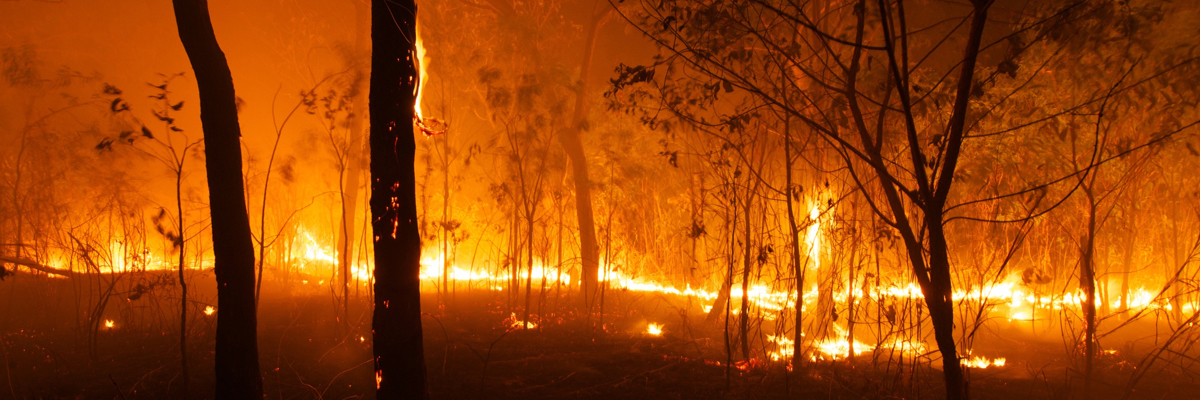Navigating the Needs: Your Overview to Obtaining a BAL Report
Navigating the Needs: Your Overview to Obtaining a BAL Report
Blog Article
Vital Tips for Bushfire Administration to Ensure Fire Protection

Recognizing Bushfire Danger Degrees
Recognizing the differing degrees of bushfire danger is crucial for reliable planning and prep work in mitigating prospective threats to lives and buildings. Bushfire risk degrees are usually categorized based upon elements such as climate condition, fuel schedule, topography, and historical fire actions. By comprehending these danger degrees, individuals and areas can proactively execute techniques to reduce vulnerability and improve strength in the face of prospective bushfire occasions.
The very first level of bushfire risk is low risk, where the likelihood of a bushfire occurring and causing significant injury is minimal. Risky degrees represent a substantial threat, with problems favorable to quick fire spread and severe fire behavior.
Comprehending these bushfire threat levels enables stakeholders to customize their preparedness and reaction activities appropriately, making sure a effective and aggressive method to bushfire monitoring.
Developing a Defensible Room
Efficient bushfire management starts with establishing a defensible space around homes to enhance security versus possible fire hazards. A defensible space is a barrier area that creates an obstacle between a framework and the bordering flammable plant life. This space works as an essential line of defense, offering firemens a secure area to run and assisting to lower the danger of a fire spreading out to the residential or commercial property.
When creating a defensible space, it is crucial to consider the format of the home and the bordering landscape. Clearing greenery, particularly highly flammable plants, within a particular radius of the residential or commercial property can help stop the rapid spread of fires. In addition, maintaining a well-irrigated area around the residential property can further improve its defensibility.
Regular maintenance of the defensible space is critical to ensure its effectiveness. This includes trimming looming branches, clearing dead greenery, and keeping the area devoid of particles. By spending effort and time into creating and preserving a defensible area, building proprietors can significantly improve their possibilities of shielding their homes and properties throughout a bushfire.
Applying Fire-Resistant Landscaping
When making landscapes to reduce the danger of bushfires, incorporating fireproof elements is crucial for enhancing residential or commercial property defense and minimizing fire hazards. Select plants with high wetness material, low oil material, and marginal dead greenery to decrease the threat of fire spread.

Developing an Emergency Discharge Plan
Creating an extensive emergency situation evacuation plan is important for ensuring the security and health of people during prospective bushfire cases (BAL Report). An efficient evacuation strategy need to outline clear procedures to comply with in case of a bushfire hazard, consisting of discover this info here designated emptying courses, assembly points, and interaction methods
To start creating an emergency situation evacuation strategy, it is vital to analyze the particular threats and susceptabilities of your area. Identify several discharge courses that lead to safe areas far from the fire, taking into consideration aspects such as surface, roadway availability, and potential risks. Develop communication channels to sharp residents of an impending emptying, utilizing methods such as alarms, text notifies, or door-to-door alerts.
Consistently review and exercise the evacuation strategy with all residents or community members to make certain every person comprehends their functions and obligations. Conduct drills to examine the efficiency of the plan and make any necessary adjustments. By having a well-prepared discharge strategy in position, you can enhance the possibilities of a safe and orderly discharge throughout a bushfire emergency situation.
Keeping Fire Safety Tools
After developing a detailed emergency discharge prepare for bushfire occurrences, it is crucial to focus on the find more routine maintenance of fire safety and security devices to guarantee ideal capability and readiness. Regular upkeep of fire security equipment such as fire extinguishers, smoke alarm, fire alarms, and sprinkler systems is critical in guarding lives and residential or commercial property throughout a bushfire. Carrying out regular examinations, screening, and servicing of these tools by qualified specialists is vital to ensure they remain in working order when required.
Fire extinguishers ought to be checked frequently for pressure levels, visible damage, and appropriate performance. By carefully preserving fire security tools, individuals can enhance their preparedness and response capabilities in the event of a bushfire.
Verdict
Finally, effective bushfire management involves recognizing danger levels, creating defensible spaces, applying fireproof landscaping, creating emptying strategies, and keeping fire security tools. By complying with these essential pointers, people can guarantee better fire defense and safety for their neighborhoods and properties. It is vital to focus on aggressive steps to minimize the dangers connected with bushfires and to be gotten ready for emergencies.
By understanding the subtleties of bushfire threat levels, establishing defensible spaces, applying fire-resistant landscape design, developing thorough emptying strategies, and guaranteeing the maintenance of fire safety tools, individuals and areas can dramatically reinforce their strength against the ravages read the article of wildfires - BAL Assessment. These ideas are not just vital for safeguarding against instant fire threats but likewise for promoting lasting fire defense approaches that can make a substantial difference in the face of intensifying bushfire threats
Risky levels indicate a considerable danger, with conditions conducive to rapid fire spread and extreme fire habits. Normal maintenance of fire security devices such as fire extinguishers, smoke detectors, fire alarms, and sprinkler systems is crucial in securing lives and residential or commercial property during a bushfire.In final thought, efficient bushfire monitoring involves understanding risk levels, creating defensible spaces, implementing fireproof landscaping, creating emptying strategies, and maintaining fire safety and security equipment.
Report this page